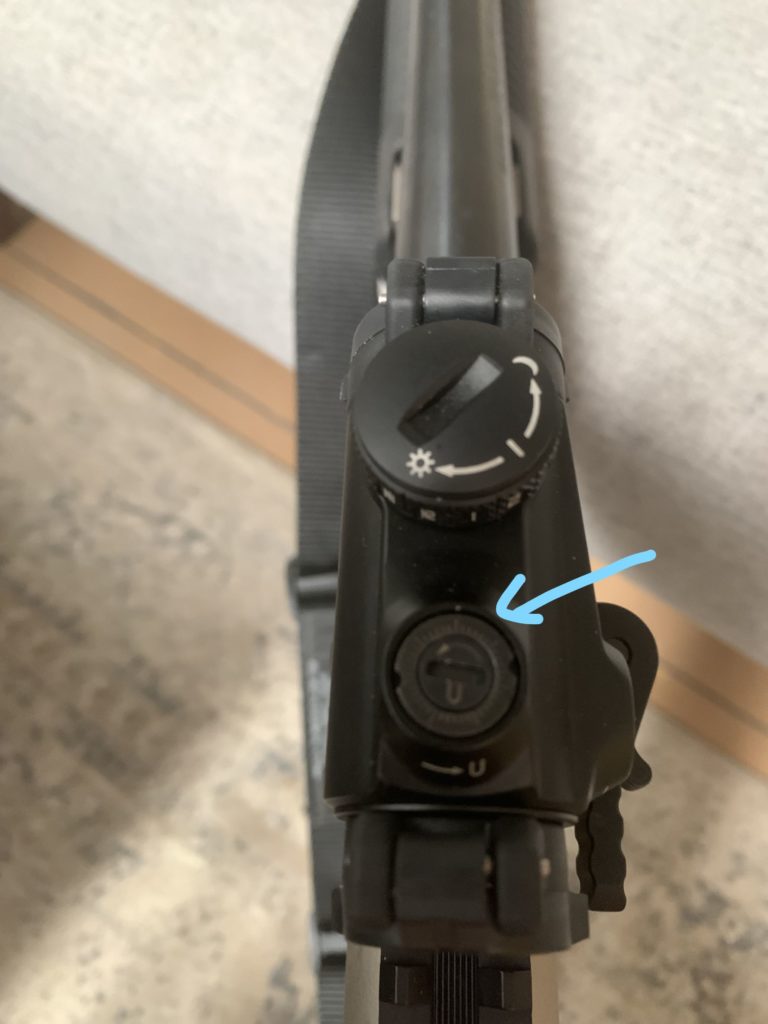I got out to the range last weekend for my months delayed trip. I was so exited to go, I muffed some items and kind of wasted the trip as well as the ammunition, which was already skinny to begin with. Let me explain.
I talked about my red dot sight I bought over a year ago. I wanted to sight it in with my new barrel and then compare how the sight functions with different loads and barrels. My going in premise is that loads and barrels will make a big difference and I wanted to see when setup for hunting how that might effect would be with a shorter barrel installed.
Sabot slugs (for rifled barrels) have always been expensive. With purchasing limits in place as well as extremely limited availability, I was able to buy some at $4/round. Fortunately, it is still hunting season in states where shotguns are required or I probably wouldn’t be able to get any at all. I figured (or hoped) with the sight bore sighted, that I could do the job with 15 rounds. That turned out not to be the case in my ill-fated trip.
The first thing I did wrong was make assumptions that were not true. A classic scope typically uses something like 1 adjustment unit on the dial makes a 1/4″ change at 100 yards. I didn’t read the manual before leaving for the range and it turns out with this sight, 1 click was a one inch adjustment. So, I was over adjusting four times the amount that I was supposed to each time. Needless to say, my first shots were all over the place.
Since I bore sighted in the basement, I was going to try and redo it at the range to try and correct my wild inaccuracies. Of course, I left my laser at home so I ended up holding the firearm on target and looking over it at the target while I squeezed the trigger to visually see where the slug was hitting on the berm and then making a guess from there.
I did get it on paper but then (I didn’t know) I over adjusted and was off again. Finally, with three shots left I was going to see how they group and not do any more adjusting. I shot two and then the sight stopped working. My speculation was that it was too cold as it was right at freezing or the batteries were dead.
By the time we got home, the sight was working again. It was something to with the temperature, I think but I am not 100% sure. I read the manual and I didn’t see any operating temperature restrictions. Even so, I wouldn’t expect 33 degrees to be under the limit. There are definitely some lessons here.
First of all, most of the time, this shotgun is going to have the 18 1/2″ barrel on it. If you listen to the talking heads in the industry, a defensive shotgun is recommended to have a sight that is useful in low light. That could be a red dot or it could be a glow in the dark or big loop. The theory being that at close range, shotgun patterns should be aimed and not pointed like in bird hunting.
My concern is really around the operating temperature. It is rarely consistently this cold including hunting season, however I have proved there is something going on here. I also don’t have a dialed in sight yet, so this thing is still nearly useless. Yeah I can use the ‘Kentucky Windage’ by holding it where I think it should be, but even that I am not confident yet.
End Your Programming Routine: This was a perfect, know your equipment moment. It is where the saying “Beware the man with one gun” comes from. The person that has one firearm uses it consistently in all situations. Had I done this test in the summer I probably would have never seen the problem. In fact, I prefer to use the indoor range in the winter because I can turn on the heat. I only was at the rifle range because I postponed for three months.
It is also quite possible that had I not been dicking around with the adjustments and guessing why I wasn’t hitting paper that I would not have seen the problem either. So the lesson is know your equipment. Know it when you are setting up, know its operational limits and possible faults. My plan is to work on this test again this month.


Recent Comments